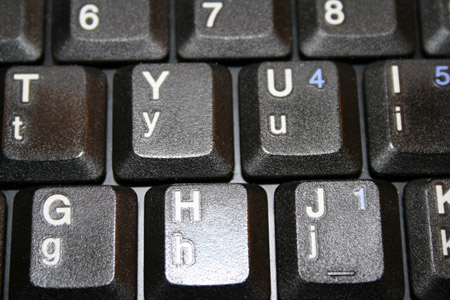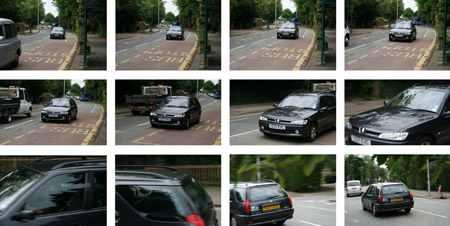Original URL: https://www.theregister.com/2008/06/03/review_canon_eos_400d/
Canon EOS 400D digital SLR
New to digital SLRs? This could be just the camera you need
Posted in Personal Tech, 3rd June 2008 10:13 GMT
Review DSLRs were once the province of the professional, with prices to match. But the cost has fallen, so for roughly twice the price of a mid-spec compact you can now pick up a decent digital SLR.
A camera like the Canon EOS 400D for example. The EOS 400D has been around for quite a while now and Canon has since launched the EOS 450D. But the EOS 400D remains in the Canon range and what’s more, is the sort of camera a beginner to DSLR photography should have on their list of potential purchases.
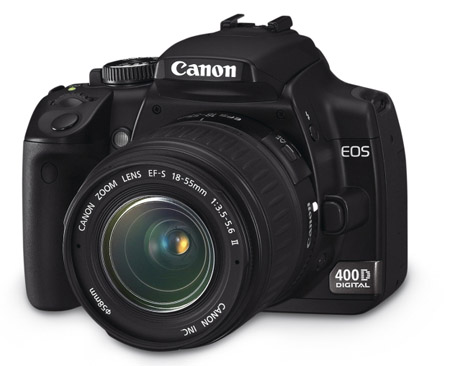
Canon's EOS 400D: compatible with more than 60 EF and EF-S lenses
As far as DSLRs go, the EOS 400D is fairly compact. No, you wouldn’t want to try and squeeze it in your coat pocket, but you’d have no trouble storing it in a smallish bag; measuring 126.5 x 94.2 x 65mm and weighing 510g without lens. The camera comes with an EF-S18-55mm f.3.5-5.6 lens and Canon says the EOS 400D is compatible with more than 60 EF and EF-S lenses.
In terms of controls, the top of the EOS 400D has a shutter button, close to which is a small dial that is used for adjusting various parameters, such as shutter speed and aperture (its mode of operation depends on what camera mode you’ve selected). On top is a pop-up flash and large control dial, which Canon divides into two groups: the Basic Zone offers a range of auto features: full auto function, portrait, landscape, macro, sports, portrait and flash disable.
If you simply want to pick up the EOS 400D and start shooting, then these are the modes to select, and as Canon charmingly puts it in the camera’s instruction book: “To prevent botched pictures due to mistaken operation, camera settings cannot be changed.” The second group is the Creative Mode and as the name suggests, it offers more scope for manual control. The modes comprise of program AE, shutter priority, aperture priority, manual exposure and auto depth of field. Next to the operation dial is an on/off switch.
Around the back is a viewfinder and a 2.5in LCD screen, which can display a lot of information including shutter speed, aperture setting, ISO, white balance, focus and file size. The information is clear with black text on a white background. If you want to switch the LCD screen off, there’s a small display button on the top left.
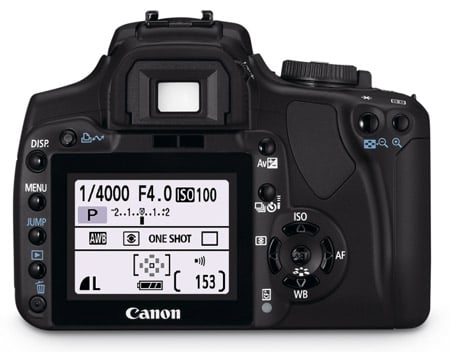
Around the back is a viewfinder and a 2.5in LCD screen
The EOS 400D also has a proximity sensor so that as soon as you put your eye to the viewfinder, the LCD screen automatically switches off. Other controls include a menu button, playback button, exposure compensation control, drive mode button and four-way controller for ISO, autofocus, metering and white balance. At the side is a cover for the Compact Flash (type I and II) card and underneath is the battery cover.
The EOS 400D has a 10.1 megapixel CMOS measuring 22.2 x 14.8mm and can shoot JPEG or RAW images (or both at the same time if you want). There are three levels of image compression and image file and file sizes range from 9.8MB RAW (3888 x 2552 pixels) to 3.8MB JPEG (3888 x 2552) to 0.7MB JPEG (1936 x 1288).
Canon also supplied software for managing RAW files, but sadly, this was missing from our review sample. You also get a choice of two colour spaces, SRGB and Adobe RGB. The ISO setting ranges from 100-1600 and shutter speed, 30-1/4000sec. The nine-point AF system offers three modes: AI Focus, One Shot and AI Servo, and there are three metering modes on offer – evaluative, centre-weighted and partial, but no spot.
The EOS 400D uses a Digic II processor and offers 3 frames-per-second continuous shooting with up to 27 JPEG or 10 RAW files being fired off in each burst. There are also various custom functions for features such as flash sync speed and noise reduction.
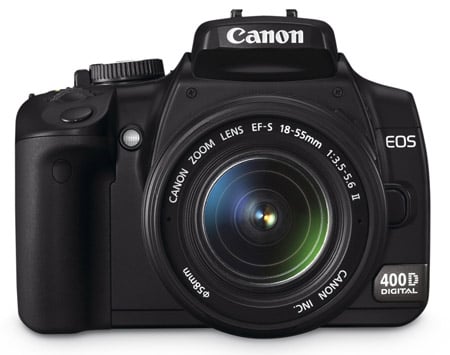
Comfortable to hold with a solid feel
The EOS 400D feels reassuringly solid and fits snugly in the hands. The most-used controls fall easily to hand and the LCD display ensures you know exactly what is going on. The viewfinder is a good size and the dioptric adjustment is very good - the viewfinder can be used with or without glasses.
When you first switch on the camera (and when you switch it off) there’s about a one-second delay whilst the camera activates a sensor cleaning system. This uses a vibrating filter in front of the sensor to shake off any dust particles...and it works well. If you don’t want to wait, you can bypass the cleaning system by simply depressing the shutter.
We enjoyed using the EOS 400D and its performance was good, especially for an entry-level SLR. Shutter response time was well under a second and the writing speed blistering – again, well below one second on a SanDisk Extreme III card. We fired off a set of shots using the AI Servo focus and the EOS 400D had no problem in tracking a fast moving vehicle.
Sample shots
Click for full-size images

We weren’t impressed with some of the auto features, like landscape (right), which is meant to offer enhanced quality over auto mode (left)
We were less impressed with some of the Basic Zone features. The landscape setting, for example, is claimed to give more vivid colours than the auto mode, but we couldn’t notice any difference. The camera also struggled at times when shooting into a strong backlight and it took a bit of tweaking with the ISO setting to gets things looking fine.
Likewise, we have seen better low-light performance from other cameras. It’s also a shame that there is no image stabilisation system and the best Canon can suggest is using a tripod. However, colour reproduction and detail were very good and there was no noise using ISO 100 and 200 settings and nothing to shout about at ISO 400.
Verdict
Let’s be blunt: there are better DSLRs on the market and the fast-moving world of digital photography means that the EOS 400 is hardly a top rank camera. But we think it is a fine model for anyone dipping their toe into DSLR photography and doesn’t want to lose the shirt on their back in order to own a DSLR camera.

